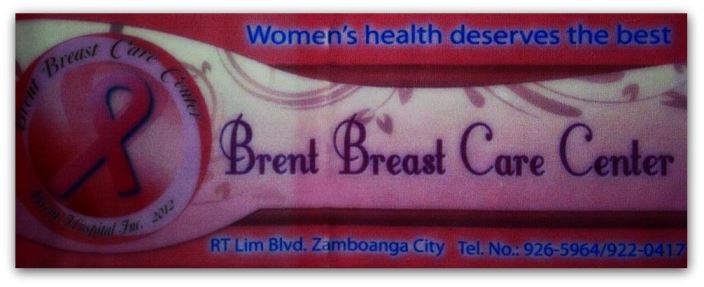
ZAMBOANGA CITY (Mindanao Examiner / July 1, 2012) – Finally, women who wanted to have medical examination or patients longing for an operation would no lonmger travel as far as Manila for their breast care because Brent Breast Care Center is now open in Zamboanga City.
The Breast Care Center is fully equipped with modern facilities to include a mammogram, an ultrasound machine, a chemotherapy room and an operating room. It also brought together some of the best specialists in Mindanao – Dr. Rhodora Rivera, a breast surgeon; Dr. Alex Cerrillo, who is a surgical oncologist, and Dr. Richard Bella, a Mamographer.
The center has a full range of integrated breast care services, including cancer screening, surgery, and chemotherapy, among others.
A breast is made of lobules, ducts, fatty tissues, blood vessels and lymph vessels. The lobules are glands that make milk; the ducts are tubes that link the lobules to the nipples. The fatty tissue surrounds the lobules and ducts. Lymph vessels carry lymph to the lymph nodes in the underarm, above the collarbone and in the chest. There are also lymph nodes throughout the body.
Breasts contain many glands that are made up of small building blocks known as cells, which produce breast milk after pregnancy. These cells normally divide and grow in an orderly manner. However, sometimes, for reasons still not known, a few of these cells become uncontrolled and continue to divide and grow causing a lump or breast tumour to be produced.
In some women, this process can take 3 or 4 years or even longer before the lump can be detected. Lumps in the breast can be either benign, which are contained in one area of the breast, or malignant, which means that they consist of cancer cells that can spread to other parts of the body, through either the bloodstream or the lymphatic system.
The lymphatic system is a network of tiny glands that helps the body produce cells to fight infection. When the cancer cells spread beyond the breast, these are often referred to as recurrences, secondaries or metastases.
Doctors can tell whether or not a breast lump is benign or malignant by taking a small sample from the tumour (called a ‘biopsy’) and looking at the cells under a microscope.
Risk Factors
According to the Breast Cancer Awareness website which can be accesed on this URL – breastcare.co.uk – many risk factors have been identified in the search to understand how female breast cancer occurs. None of them on its own is considered to be a single risk factor, but taken together they can indicate an increased risk of developing breast cancer.
For example, women who have not had children or had them late in life seem to have an increased risk, as do women whose periods started when they were very young or who had a late menopause. There is some evidence that women who take the contraceptive pill or receive hormone replacement therapy are at slightly greater risk, but the importance of this is still being evaluated around the world.
Diet appears to play a role, in that those who have a very fatty diet have a slightly increased chance of getting breast cancer compared with those who eat more healthily.
Obesity and a high intake of alcohol on a regular basis have also been noted as risk factors but there is no evidence that increased stress has any effect upon increased risk of breast cancer.
However, despite an increased knowledge of the variety of risk factors for breast cancer, approximately half of the women who develop the disease have no known risk factors at the time of diagnosis.

